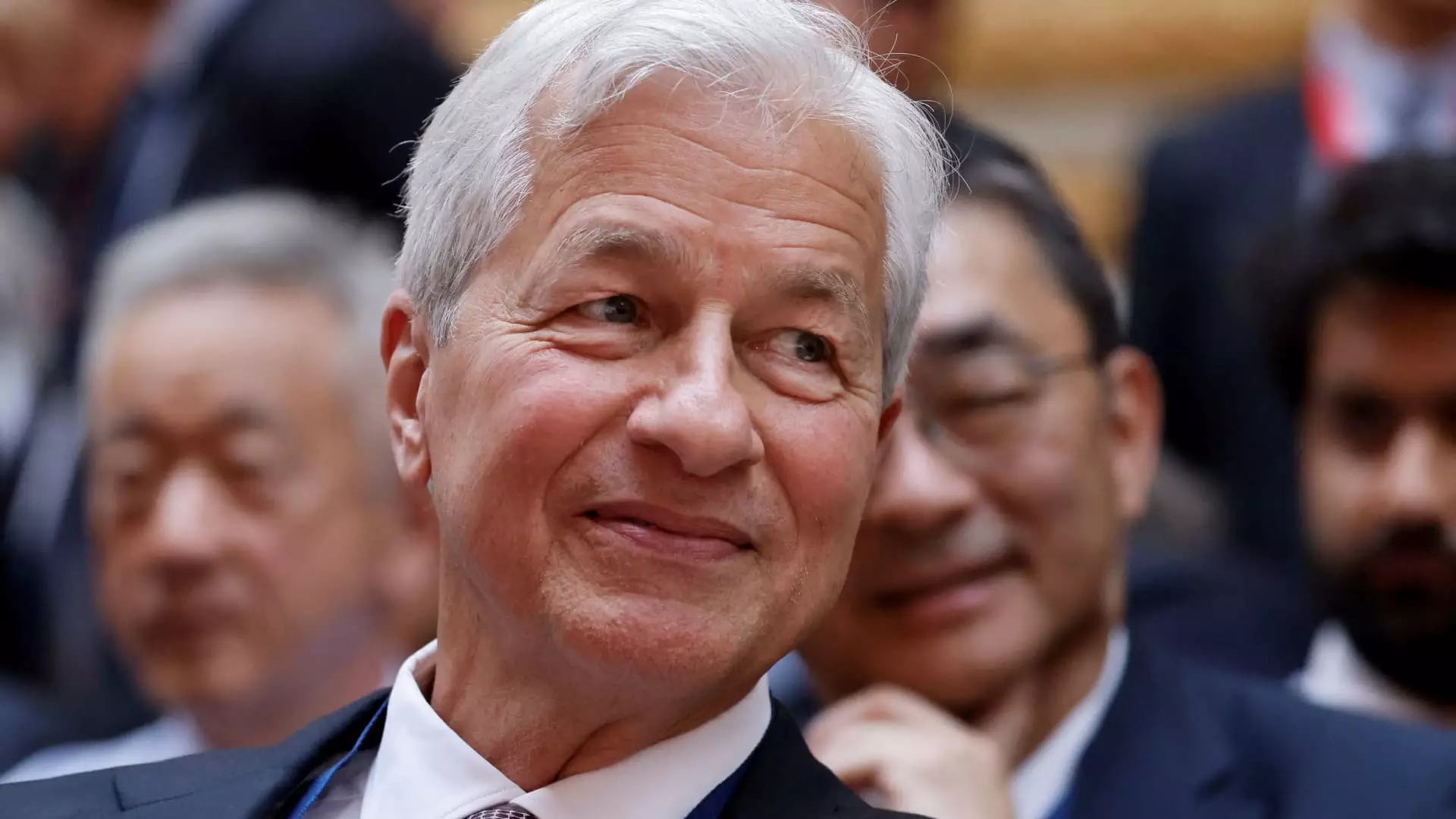In the world of finance, the term “excess capital” signifies a situation where a financial institution holds more capital than regulatory requirements dictate. For JPMorgan Chase, America’s largest bank by assets, this circumstance has become more than a mere statistic; it is a strategic dilemma. With estimates suggesting that JPMorgan is sitting on approximately $35 billion in surplus cash, the bank faces scrutiny over its intentions amid a backdrop of ever-changing economic conditions. The concept of excess capital is often viewed through the lens of opportunity. It provides institutions with a cushion to absorb shocks in volatile markets or unexpected economic downturns. However, the challenge arises in determining the best use for these funds. Should they be returned to shareholders, invested in growth initiatives, or retained for regulatory safeguards? This question is now more pertinent than ever for JPMorgan.
Throughout recent earnings calls, conversations have veered towards how JPMorgan plans to manage this surplus. CFO Jeremy Barnum’s assertion that the bank aims to limit the growth of this excess capital resonates with many investors and analysts who seek clarity on future strategies. Barnum’s characterization of this dilemma as a “high-class problem” highlights the paradox; while the bank enjoys a record profitability, the concern lies in what to do with the vast reserves. Investor pressure is palpable, with many pushing for more aggressive capital return strategies through share buybacks. Barnum’s statements reveal a careful balancing act: the bank must remain responsive to shareholder desires while remaining mindful of potential economic uncertainties.
The regulatory landscape also plays a critical role in JPMorgan’s deliberations. The previous Basel III rules imposed strict capital requirements on banks, spurring many to accumulate surplus reserves in anticipation of more stringent demands. However, with regulatory sentiment shifting, particularly under the incoming Trump administration, the urgency to maintain such high capital levels may wane. This evolving landscape necessitates a reevaluation of earnings management practices and capital allocation decisions. Agencies like the Federal Reserve often regulate how banks must operate, particularly in turbulent markets. Therefore, JPMorgan’s decisions about share buybacks must carefully consider future regulatory requirements.
The dialogues surrounding share buybacks have further intensified when juxtaposed against stock valuations. CEO Jamie Dimon has expressed reluctance to increase buybacks when the company’s stock price reaches high levels. Earlier this year, he stated that repurchasing stock at excessive valuations could be counterproductive. Dimon’s perspective isn’t just business acumen; it underscores a fundamental principle in finance: the cost of capital. Buying back shares when valuations are inflated may deplete funds unnecessarily and result in less favorable outcomes when future valuations stabilize. The bank’s stock price has only continued to rise, underscoring the complexity of returning capital to investors without jeopardizing potential future growth.
As JPMorgan continues to navigate this maze of decisions regarding excess capital, there is a persistent undercurrent of caution regarding the economic outlook. CEO Jamie Dimon has issued warnings about impending recession indicators, though the anticipated downturn has yet to materialize. According to analysts like Charles Peabody, preparing for economic volatility can act as both a safeguard and an opportunity. A major downturn may enable JPMorgan to allocate its surplus cash more effectively, particularly through increased lending activities, giving the bank a competitive edge as weaker competitors may struggle to adapt.
JPMorgan Chase stands at a crossroads, challenged by the dual necessity of satisfying investors and preparing for potential economic headwinds. The intricacies of managing excess capital demonstrate the complexities inherent in high-level finance, where decisions must withstand rigorous scrutiny and anticipate future market fluctuations. As the largest bank in the U.S. evaluates its strategy, the pathway ahead relies on striking a balance between returning cash to shareholders, maintaining regulatory compliance, and ensuring preparedness for an unpredictable market landscape. Ultimately, the decisions made in the coming months will not only affect the bank’s financial health but also shape the broader banking industry’s economic landscape.


Leave a Reply